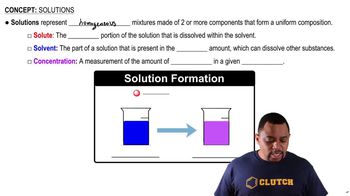Here are the essential concepts you must grasp in order to answer the question correctly.
Net Ionic Equations
Net ionic equations represent the actual chemical species that participate in a reaction, excluding spectator ions. They focus on the ions and molecules that undergo a change during the reaction, providing a clearer picture of the chemical processes involved. To write a net ionic equation, one must first write the complete ionic equation and then eliminate the spectator ions.
Recommended video:
Acidic Solution
An acidic solution is characterized by a higher concentration of hydrogen ions (H⁺) than hydroxide ions (OH⁻). In such environments, certain reactions may proceed differently due to the presence of H⁺ ions, which can influence the oxidation states of elements and the overall reaction pathway. Understanding the role of acidity is crucial for predicting the products and balancing the equations correctly.
Recommended video:
Oxidation and Reduction
Oxidation and reduction (redox) reactions involve the transfer of electrons between species, leading to changes in their oxidation states. In the given reaction, TeO₂ is reduced to Te, while Cr²⁺ is oxidized to Cr³⁺. Identifying which species is oxidized and which is reduced is essential for balancing the net ionic equation and understanding the underlying chemical transformations.
Recommended video:
Oxidation and Reduction Reactions
 Verified step by step guidance
Verified step by step guidance


